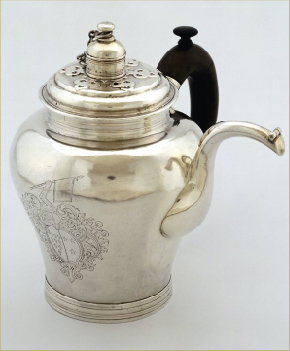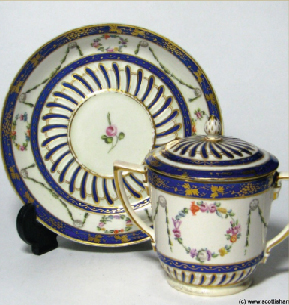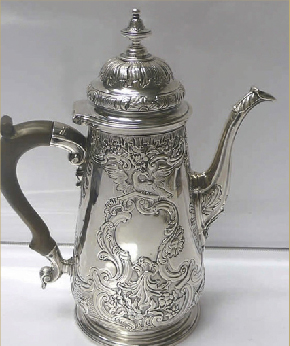The high percentage of cocoa butter in early chocolate meant that vigorous mixing with boiling water or milk was required in order to create a froth to improve its palatability. This inevitably involved using a tall and narrow pot, with a long handled stirring implement.
Variously known as molinets, moulinets, molinillos, or simply chocolate mills, these stirrers were turned from wood with a serrated head and narrow handle for rolling between the palms for a strong whisking action.
The vessel, or chocolate pot, would generally have a hole in the lid to allow the whisking to be done while closed, and are most often known as chocolatieres – a French word because the silversmiths of that country are credited with being the first manufacturers.
In 1685 silversmith George Garthorne made the earliest known silver chocolate pot in England (1). These became popular in high society, usually being tall in design with a hinged lid.
A gold chocolate cup made by Ralph Leake around 1690 is now kept at the Temple Newsam House, Leeds. Ceramic or porcelain chocolate pots were also popular, and porcelain cups were made with lids for chocolate (2).
In 1711 Charles Goodale was convicted at the Old Bailey of stealing a silver chocolate pot worth £12/1/0 and sentenced to death. This was the unfortunate outcome for at least half a dozen felons found to have stolen chocolate pots over the following 90 years.
17th and 18th century English silver chocolate pots were commonly decorated with raised metal designs, or carried family crests (3). They generally had wooden handles set at 90 degrees from the spout, screwed in such that tipping forward to pour would always tighten the attachment.


